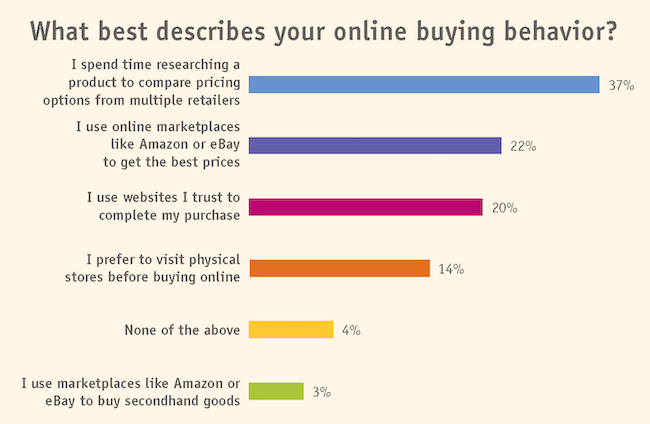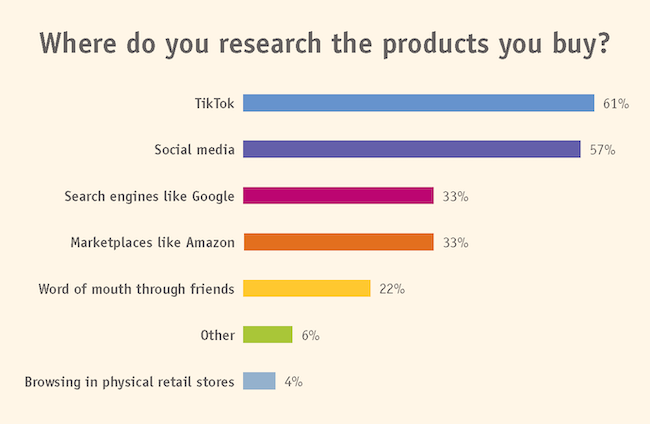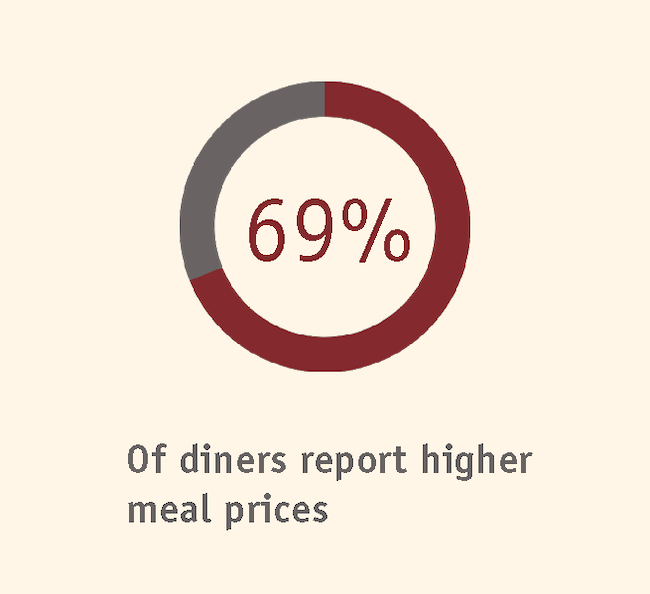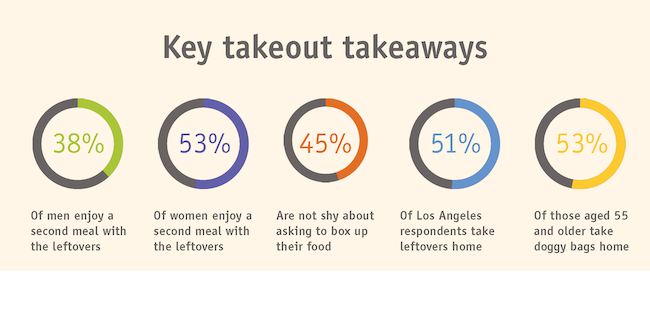••• b2b research
Woe is not necessarily me
Business owners confident despite challenges
 Almost half of all business owners surveyed in May expect interest rates to increase in the next six months, highlighting mounting economic concerns, according to a study by Nationwide. The majority of small business owners (72%) and middle-market business owners (51%) rate the current condition of the U.S. economy as “poor” or “fair,” with inflation topping their list of concerns at 61%. Following closely behind are worries about the upcoming U.S. presidential election (49%), high interest rates (49%) and supply chain disruptions (40%).
Almost half of all business owners surveyed in May expect interest rates to increase in the next six months, highlighting mounting economic concerns, according to a study by Nationwide. The majority of small business owners (72%) and middle-market business owners (51%) rate the current condition of the U.S. economy as “poor” or “fair,” with inflation topping their list of concerns at 61%. Following closely behind are worries about the upcoming U.S. presidential election (49%), high interest rates (49%) and supply chain disruptions (40%).
Despite these and other economic uncertainties, many business owners have a brighter perspective when considering their own businesses, with small (51%) and middle-market (73%) owners rating the economic environment for their own business as “good” or “excellent.”
In addition to macroeconomic concerns, owners face pressure from workers who are experiencing economic strains and are demanding more from them. In the last six months, 37% of all business owners experienced employees asking for better compensation, more or better benefits (32%) and employees leaving for a better paying job (28%).
Business owners are adopting a proactive, hands-on approach to improving their company's resiliency and to meet the evolving needs of their staffs. They’re implementing measures to mitigate risk and handle unforeseen circumstances. Fifty-three percent of small business owners and 66% of mid-market business owners are proactively planning for a potential crisis. Forty-one percent of small and 63% of mid-market business owners are implementing or updating their business continuity plans and 31% of small and 59% of mid-market business owners are making structural repairs or improvements to their building/property. Over half of small (65%) and mid-market (75%) owners feel prepared to navigate potential disruptions like a weather or financial event.
Furthermore, business owners say they are investing in their workforce by providing additional benefits, such as increased compensation and improved retirement offerings. More than half (59%) of small and 80% of mid-market business owners are planning to or have already increased wages. Thirty-two percent of small and 74% of mid-market business owners are planning to or have already improved retirement offerings.
Most business owners feel they are on track when it comes to being financially prepared for retirement. Nevertheless, 57% of small and 32% of mid-market business owners also report that within the last 12 months, they have pushed back their retirement timeline because they're worried that they haven't saved enough. Forty percent of small and 20% of mid-market owners have had to reduce the amount they save due to current economic conditions. Meanwhile, over 40% of all respondents reported that they are delaying retirement because they enjoy working.
When it comes to retirement, not all business owners have a clear succession plan in place. Only 30% of small business owners have a succession plan compared to 62% of mid-market business owners. Among those small business owners without a succession plan, almost one in four (24%) say they plan to close the business permanently. When asked what advice they would most want to give their younger selves about planning for retirement, 52% of small and 39% of mid-market owners said they would start planning earlier and 47% of small and 42% of mid-market owners would save more consistently.
Nationwide commissioned Edelman Data and Intelligence to conduct a nationally representative online survey of 400 U.S. small business owners, 400 mid-market business owners and an oversample of business owners ages 60-65 nearing retirement (n = 100) from May 1-15, 2024.
••• shopper research
Not sold on the experience
Consumers demand more from online shopping
 Amid a proliferation of purchasing options and budget concerns surrounding sustained inflationary pressures, online retailers are struggling to meet rising consumer expectations around the globe, according to integration and automation platform Celigo. There’s a significant difference in online shopping sentiment across generations. While one-third of Baby Boomers across the globe reported flawless online shopping experiences in 2023, Gen Z, which will gain $2 trillion in purchasing power within the decade and emerge as the most dominant shopping demographic, reported the greatest dissatisfaction with online shopping. In fact, 92% of Gen Z respondents in the U.S. and 85% in the U.K. had at least one negative online retail transaction within the past year.
Amid a proliferation of purchasing options and budget concerns surrounding sustained inflationary pressures, online retailers are struggling to meet rising consumer expectations around the globe, according to integration and automation platform Celigo. There’s a significant difference in online shopping sentiment across generations. While one-third of Baby Boomers across the globe reported flawless online shopping experiences in 2023, Gen Z, which will gain $2 trillion in purchasing power within the decade and emerge as the most dominant shopping demographic, reported the greatest dissatisfaction with online shopping. In fact, 92% of Gen Z respondents in the U.S. and 85% in the U.K. had at least one negative online retail transaction within the past year.
In addition to disappointing shopping experiences in 2023, the research also exposed the most important qualities consumers seek in online retailers, how they research and buy products and their spending intentions for the upcoming 2024 holidays. Consumers listed convenience (52%), greater access to product offerings (48%) and lower prices (34%) as their primary reasons for shopping online as opposed to brick-and-mortar retail stores. U.S. shoppers cited lower prices (59%), free shipping (53%) and fast shipping (33%) as the three most important offerings when choosing an online retailer. Conversely, the top reasons consumers would cease the buying relationship with a vendor were receiving products that do not accurately match their descriptions (39%), excessive shipping costs (38%) and late deliveries (32%).
Seventy-one percent of respondents say they will spend just as much or more online during the 2024 holiday shopping season than they did in 2023 with 53% saying they plan to participate in a Cyber Monday or Black Friday event. Forty-three percent of respondents stated that inflation and higher prices have led them to shop online less because they need to tighten their budgets. On the other hand, 31% say that inflation has caused them to shop online more because they find better deals there.

Sixty percent of consumers rely heavily on product reviews found on retailers’ websites when making their final purchasing decision, while 41% turn to third-party review sites. Discerning shoppers are scouring the internet for the best deals and products, with 35% saying they research multiple retailers and more than 20% turning to marketplaces such as Amazon or eBay to compare pricing options. Twenty percent say they go directly to the websites they trust to complete purchases and 14% prefer to visit physical stores before purchasing a product online.

In the U.S. and the U.K, more than half of Gen Z shoppers rely on social media (57%) and TikTok (61%) to research the products they buy. Thirty-three percent choose Amazon as their research method while 21% rely on word of mouth and friends.
Celigo surveyed 1,506 respondents from the U.S. and U.K.
••• restaurant research
Dining in an age of inflation
‘Can I box that up for you?’
 With dining costs on the rise, Americans are getting creative to save a few bucks when eating out, according to research from Lightspeed Commerce. Fifty-one percent of respondents say they will either continue to dine out at the same rate or increase going out in the next six months. That being said, consumers are certainly looking at how best to stretch their dollar as seven in 10 (69%) diners report higher meal prices and four in 10 (39%) notice their favorite dishes are shrinking in size – a phenomenon commonly referred to as shrinkflation.
With dining costs on the rise, Americans are getting creative to save a few bucks when eating out, according to research from Lightspeed Commerce. Fifty-one percent of respondents say they will either continue to dine out at the same rate or increase going out in the next six months. That being said, consumers are certainly looking at how best to stretch their dollar as seven in 10 (69%) diners report higher meal prices and four in 10 (39%) notice their favorite dishes are shrinking in size – a phenomenon commonly referred to as shrinkflation.

With 81% of respondents dining out at least once a month and 39% dining out once a week or more, Americans are looking for ways to keep dining fun and affordable and they are pulling out all the stops. A savvy 43% are hunting for deals with coupons, 39% are choosing value meals and 36% are making the most of happy-hour specials.
Nearly half (45%) of respondents are not shy about asking to box up their food to stretch their dining dollars. Interestingly, 53% of women compared to 38% of men are more likely to enjoy a second meal with the leftovers. Older Americans, particularly those aged 55 or older, are similarly inclined, with 53% taking doggy bags home. Diners in Los Angeles appear more conscious about food waste, with 51% requesting leftovers to go.
 Tipping continues to be a hot topic in the quest to save money when dining out. A whopping 73% of diners are not fans of automatic tipping prompts on digital screens, with 58% saying they feel pressured to tip more than they'd like, often to avoid appearing stingy. Inflation has affected the amount diners are willing to tip, according to 44% of survey respondents and more than half (55%) in the 18-34 age group. However, most restaurant goers remain generous with 38% saying they tip between 16% to 20%, 34% opting for 10% to 15% and 13% tipping 21% or more. Interestingly, for scenarios outside of the normal tipping etiquette, survey respondents were overwhelmingly supportive of tipping delivery drivers (61%), not so much for coffee shops (28%) or ordering at the counter (19%).
Tipping continues to be a hot topic in the quest to save money when dining out. A whopping 73% of diners are not fans of automatic tipping prompts on digital screens, with 58% saying they feel pressured to tip more than they'd like, often to avoid appearing stingy. Inflation has affected the amount diners are willing to tip, according to 44% of survey respondents and more than half (55%) in the 18-34 age group. However, most restaurant goers remain generous with 38% saying they tip between 16% to 20%, 34% opting for 10% to 15% and 13% tipping 21% or more. Interestingly, for scenarios outside of the normal tipping etiquette, survey respondents were overwhelmingly supportive of tipping delivery drivers (61%), not so much for coffee shops (28%) or ordering at the counter (19%).
The backlash against QR code menus is palpable. While 20% of respondents appreciate their hygiene benefits, nearly nine in 10 (89%) would rather flip through a physical menu, especially at fine-dining spots, where this jumps to 94%. Thirty-four percent say they downright “hate” QR code menus and a quarter (25%) grumble that the text on digital menus is just too tiny to read.
The disdain for QR codes is more pronounced among the older generation, with 62% of those aged 65 and above requesting a paper or printed menu when presented with a QR code by a server. Additionally, 32% admit to not being tech-savvy enough to navigate QR code menus.
Lightspeed conducted this survey throughout May 2024 using survey vendor Medallia. Over 7,500 anonymous responses were collected globally, distributed among the following countries: Canada (1,500 respondents), U.S. (1,500), U.K. (1,000), Germany (1,000), France (1,000), Netherlands (1,000) and Belgium (1,000). Respondents were required to be over the age of 18 and have attended a sit-down restaurant within the last six months.
••• leisure research
Taking a slowcation
Travelers indulge in doing nothing
 Jam-packed, fast-paced vacations are out and rest and relaxation are in, according to travel agency Scott Dunn. In 2024, Americans are prioritizing a gentler pace, with almost two-thirds (60%) traveling specifically to de-stress and slow down.
Jam-packed, fast-paced vacations are out and rest and relaxation are in, according to travel agency Scott Dunn. In 2024, Americans are prioritizing a gentler pace, with almost two-thirds (60%) traveling specifically to de-stress and slow down.
Slow travel embraces switching off, detaching from everyday life and taking each day as it comes. When asked what they do to relax on vacation, over half of respondents pointed to going out to eat and grabbing drinks (52%). Almost half find comfort in spending time outdoors (47%) and many enjoy going on excursions (26%) while 44% use their vacation time to "do nothing" or to catch up on sleep (35%). Forty-three percent enjoy socializing with loved ones, 29% would rather pick up a book, 27% choose to sunbathe, 26% listen to music or a podcast and 24% use the time to watch TV or films.
Spending time outdoors is popular as Americans say Mother Nature helps them relax while on vacation. This comes as no surprise as studies show that spending time in nature is an antidote for stress. Despite the desire to relax, there’s still a demand for cultural exploration as three in 10 want adventure and excitement this year. However, the research reveals that Americans aren't exploring as much as they used to, in a go-go, pre-arranged way. Instead, they are drawing out their travel plans for as long as possible, savoring each moment and adopting a “go with the flow” attitude.
It takes Americans three full days to switch off while on vacation, although those who regularly check their smartphone (and e-mails) may find it takes them even longer to unwind. Fifty-six percent say they could not go on a vacation without their smartphone and 31% admit they couldn't last more than a few hours without checking their work e-mails while traveling. A separate Scott Dunn survey revealed that 41% plan to take longer vacations this year, suggesting they crave more rest, a slower schedule and more time to relax.
This survey was conducted with 2,000 U.S. adults.
••• financial research
Got my mind on my money…
Brits obsess over banking apps, balances
 Widespread financial anxiety among U.K. consumers has led to a phenomenon known as “financial doomscrolling” – a term describing the excessive monitoring of account balances and banking apps. Amid a period of political and economic uncertainty, FinTech company FIS found that 51% of consumers are “obsessed” with checking their financial apps, with 63% of Gen Z and 64% of Millennials engaging in this habit.
Widespread financial anxiety among U.K. consumers has led to a phenomenon known as “financial doomscrolling” – a term describing the excessive monitoring of account balances and banking apps. Amid a period of political and economic uncertainty, FinTech company FIS found that 51% of consumers are “obsessed” with checking their financial apps, with 63% of Gen Z and 64% of Millennials engaging in this habit.
The research explored how different generations – from Generation Z to Baby Boomers – are thinking about their finances, as well as the tools they use to manage them across the money life cycle. Financial concern is rife among U.K. consumers with 58% of respondents feeling “worse off” than they were 12 months ago. Thirty-five percent are struggling to save and 75% are unable to meet their financial goals due to inflation and the rising cost of living.
Tied to this trend, 45% of consumers say they think about their money and financial situation daily – typically around five times a day – while 37% check their current account balance daily. When asked why they are thinking about their money so frequently, 41% said they are worried about their financial situation and 47% are thinking about how to improve it.
Despite expressing a sense of financial doom and gloom, 68% said they are extremely or very satisfied with their primary bank. More than three-quarters (77%) of respondents are not likely to switch their primary bank in the next year, rising to 87% for Baby Boomers.
In a clear shift away from brick-and-mortar banking, over eight in 10 people surveyed are utilizing financial apps, with online banking and mobile wallets being the most common, and most consumers are unfazed by bank branch closures, with 79% claiming they have seen little to no impact. Strikingly, mobile banking is the top reason for every generation’s loyalty to their primary bank. Overall, 56% of consumers listed mobile banking capabilities as a benefit of being a customer with their primary bank, rising to 63% for Gen Z.
Many U.K. consumers have struggled to save money in the past 12 months amid the cost-of-living crisis. Four in 10 respondents said they do not have funds to cover three months of living expenses and 35% have less than £500 in savings. Generation X are the least likely generation to have savings, with 27% revealing they have none whatsoever. Some are relying on credit, with 33% admitting to over £1,000 of credit card debt. Generally, more than half of those surveyed feel worse off now than they did a year ago and the outlook is pessimistic: 33% believe their situation will remain the same over the course of the next 12 months and 40% feel their situation will worsen.
Openly discussing one’s financial situation is no longer considered taboo. The most common financial goal in the last 12 months was to say no to unnecessary spending as 48% of consumers embrace “loud budgeting” – a trend in which individuals vocalize what they can and can’t afford and therefore hold themselves publicly accountable to living within their means. Sixty-one percent say they feel comfortable talking about their finances with family and friends. This sentiment increased to 67% of Gen Z, who appear in favor of a more open dialogue around money.
The survey was conducted by Savanta in April-May, 2024, with a sample of 2,008 adult consumers across the U.K., spanning Gen Z, Millennials, Gen X and Baby Boomers.
